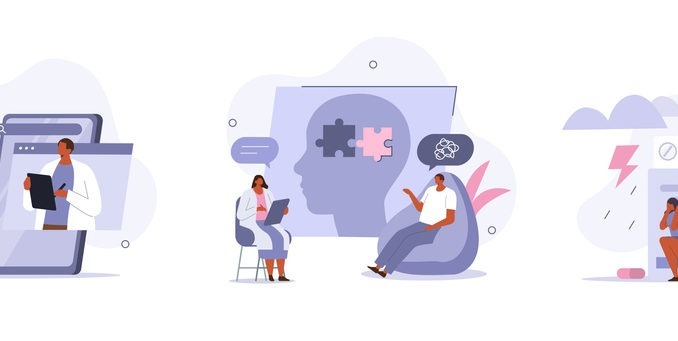
Digital transformation is viewed as a potential solution to the challenges facing healthcare systems internationally – but if it results in more workload shifting to patients and their support communities, it could increase, rather than lessen, the burden of treatment
CREDIT: This is an edited version of an article that originally appeared on The BMJ
The ‘burden of treatment’ refers to the demands that healthcare professionals and systems place on patients and their support community, and the implications this has on their quality of life; it is an important barometer of quality of care. It includes the work involved in self-management of care such as:
- gaining an understanding of chronic conditions;
- their management and implications;
- engaging with health and social care professionals, family and friends to access care and treatments;
- putting self-management recommendations into practice;
- taking multiple medications;
- enduring side effects;
- attending appointments and investigations;
- enacting lifestyle and behaviour changes;
- self-monitoring activities and reconfiguring treatments to make them workable;
- navigating complex care systems.
Many factors have been recognised as increasing the burden of treatment such as multimorbidity and associated polypharmacy, inadequate provision of information, the administrative burden associated with managing a chronic illness – such as dealing with poorly co-ordinated healthcare – and inadequate communication.
People vary in their capacity to cope with any given level of burden of treatment depending on factors ranging from the individual (cognitive abilities, health literacy, physical condition) to wider issues such as their financial circumstances, environment, and the strength of their support community. Digital transformation is viewed as a potential solution to the challenges facing healthcare systems internationally but, if it results in more workload shifting to patients and their support communities, it could increase – rather than lessen – the burden of treatment.
The NHS Long Term Plan aims to provide a ‘digital first’ option within 10 years; the current chancellor of the exchequer says that he plans to spend “billions on digitising the NHS.” Digital health provides opportunities and challenges, particularly to ensure that the move to digital health does not widen health inequalities. Scant consideration has been given to how, and to what extent, digital health ameliorates or contributes to the burden of treatment experienced by patients and their supporters.
Potential to reduce the burden?
Digital health has the potential to reduce the burden of treatment for some. The ability to tele-consult, via telephone or video, can reduce the number of visits to health professionals. Attending clinic or hospital appointments is time-consuming, can be stressful, and may entail considerable expense and effort. The distance a person must travel, availability and affordability of transportation, building accessibility, and whether the appointment requires the person to negotiate time off work or childcare, can all influence the perceived burden of treatment associated with attending appointments.
Reducing such visits through teleconsulting can lessen the burden of treatment for those with busy home or work lives, for those for whom accessing transportation is difficult or expensive, or those with disabilities, visible or invisible. However, teleconsulting via video requires access to fast broadband, and wi-fi in the home, and assumes that people can use these systems. People who are homeless, or those from less affluent groups will not have access to these resources and may be seriously disadvantaged. They will find the burden of treatment exacerbated by a move to digital or remote care. Similarly, those who do not speak English, or who have cognitive or other sensory impairments, may also find the move to remote care increases the burden of treatment as they are unable to access digital services unaided.
The promotion of home telemonitoring systems for people with chronic conditions, such as hypertension or asthma, may lessen the treatment burden for some as it may decrease face-to-face appointments and may enhance people’s knowledge and understanding of their condition and an individual’s sense of control. However, some of the time saved will be substituted with additional self-monitoring work; whether it succeeds in lessening treatment burden will depend on the individual’s personal circumstances, as outlined above.
Furthermore, a person with multiple chronic conditions who has multiple separate home telemonitoring systems to operate may find the self-monitoring workload overwhelming and unmanageable.
Overwhelmed by demands
Evidence-based apps for people to promote weight loss, or help manage low back pain or diabetes, may lessen the burden of treatment if users find the apps to be useful, usable and desirable. When, on the other hand, apps are poorly integrated into plans of care, offer misinformation or poor-quality advice, or are demanding to use, they may increase the burden of treatment. This may also be the case when users are overwhelmed by demands – made by life or healthcare – on their time which they must face alone because of the move to remote care. In either case, patients may feel abandoned by healthcare that by offering digital ‘solutions’ is not just unresponsive, but also burdensome.
The move to remote digital healthcare can reduce the burden of treatment to the extent that these services are purposefully designed primarily to reduce the demands on time, energy and attention placed on the patient, and only secondarily to reduce costs or improve operational efficiency. Devices, applications, workflows, systems and practices must be designed to avoid exceeding the capacity of those less digitally able because of financial, language, literacy, cognitive, physical and social support limitations. In addition, an overemphasis on disease-focused digital health solutions will be inappropriate for the growing population that lives with multimorbidity (two or more chronic health conditions).
Digital and remote healthcare not designed with these factors in mind will render patients vulnerable, not only to digital inequalities, but also to loss of wellbeing due to their contribution to an already unsustainable burden of treatment.

Be the first to comment